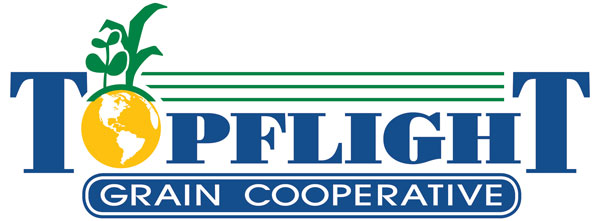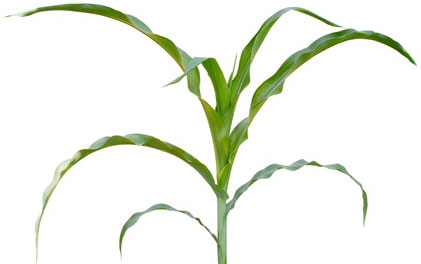Friday, December 12, 2025
Closing Markets: Corn: -5.75 old & -3 new.
Beans: -16.75 old & -10 new. Wheat: -4.25.
Topflight Grain is offering Free PL on soybeans to all full-time locations except Maroa based on space availability good through August 31, 2026.
We also are offering Free PL on corn delivered to Pierson based on space availability good through August 31, 2026.
Christmas Open House is coming up! NEXT WEEK! 11am-1pm!
Cisco – Tuesday, 12/16
Seymour (Venison BBQ & Chili) & Pierson – Wednesday, 12/17
Emery & Kruger – Thursday, 12/18
Grain Marketing Program signups are due by 12/31/25!! Contact your originator with any questions or if interested in signing up!
Good evening!
Market Recap-
It felt like a "risk-off" sort of day with most commodities in the ag space trending lower, along with the equity markets, crypto and even metals selling off throughout the day. Daily sale announcements from China were less than expected for soybeans and it is becoming more and more clear that the bulk of the buying from China is slowing down, at least for now. Soybeans futures remain the weakest link as funds liquidate longs established during the fall rally. Technical selling has pushed soybean futures 42 cents lower since last Thursday's close while nearby corn futures have lost 7 cents. Fresh fundamental news remains scarce and as the old saying goes, "the bull needs to be fed daily".
Corn Summary-
After chopping sideways for 2 straight weeks, corn futures closed 4-5 cents weaker as the sell-off in soybeans weighed on corn. CH had its worst close since late Nov while also closing below the 20 and 50-day moving averages. Lower production ideas for the January crop report offers mild support while the bears are quick to point out the likelihood of lower residual use with a smaller crop, while also pointing out the September stocks report from earlier this fall implying sharply lower Feed usage. Which brings up the question, "Why is new crop Feed/Residual usage forecasted to jump 634 MB (11.6%) from last year while both cattle and hog numbers are below a year ago levels?". The market continues to debate strong export demand and lower production ideas, offsetting a potential reduction in F/R usage.
Soybean Summary-
Soybean futures settled near the day's low, making a new low for the move while also closing solidly below the 50-day moving average for the first time in nearly two months. Traders are watching the open gap from October (SF 10.63 to 10.7025) as the next technical objective. Nearby futures have lost 60 cents in December and are now trading at a 7-week low. Growing conditions in Brazil remain favorable with early harvest just starting to begin. Record yields are expected and the window for US export demand is quickly closing. The USDA left soybean export demand unchanged in the Dec WASDE report at 1.635 MMT. Year to date sales (thru Nov 13) total 676 MB, down 41.7% from a year ago with the USDA forecasting just a 13.1% decline. COT data will be updated again today.
Wheat Summary-
Nearby wheat futures closed lower on the day while also closing on the day's lows. However, WH26 managed to hold support near Thursday's low. Almost hard to believe but nearby Chicago wheat (WH26) has managed to settle in a relatively narrow 11 1/2 cent range for more than 3 weeks now. The lack of demand, record crops, and world wheat values trading below corn doesn't paint a bullish picture.
Outside News Headlines-
Crude oil futures down $0.25+/bbl.
Weather Updates-
Colder / much colder temperatures are moving into the Midwest this weekend after another Alberta Clipper moves through the region. Snowfall totals will reach 4-5" in a narrow band stretching from NW IA into C IL, while the fringe areas may see just a trace to 1" of accumulations. Frigid temperatures are expected with Sunday morning being the coldest with C IA temperatures reaching as low as -12 degrees.
Once the initial cold blast leaves the region, temperatures are expected to rebound back to above normal by Mon/Tue of next week. This will be the first major change in the Midwest weather pattern since Thanksgiving week as a ridge of high pressure moves into the Midwest. This set-up will push the active pattern further north, creating a drier pattern for the Plains and eventually the Midwest.
Weather models continue to moderate to heavy rains for most of C and N Brazil over the next week. Rainfall totals of 3 to 6" are expected for much of the region over the next 10 days. The midday maps are like the overnight runs with plenty of moisture and no extended periods of heat.
Showers are popping up on radar for S Brazil and Paraguay, along with scattered showers for Mato Grosso. Further south into Argentina, conditions will remain mostly dry although the extended maps are showing improved rain chances by next weekend. Soil conditions will be dry and in need of moisture by next weekend. Temperatures are expected to remain moderate, limiting drought stress.
Enjoy it!
Bailey Runyen
Grain Originator | Topflight Grain Coop.
101 N. Main St. | Cisco, IL 61830
Phone :: 217-669-2141
Email :: brunyen@tfgrain.com
Image
... See MoreSee Less






















0 CommentsComment on Facebook